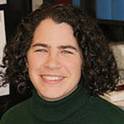
Article
Manipulations of listeners’ echo perception are reflected in event-related potentials
Journal of the Acoustical Society of America
(2011)
Abstract
To gain information from complex auditory scenes, it is necessary to determine which of the many loudness, pitch, and timbre changes originate from a single source. Grouping sound into sources based on spatial information is complicated by reverberant energy bouncing off multiple surfaces and reaching the ears from directions other than the source’s location. The ability to localize sounds despite these echoes has been explored with the precedence effect: Identical sounds presented from two locations with a short stimulus onset asynchrony (e.g., 1–5 ms) are perceived as a single source with a location dominated by the lead sound. Importantly, echo thresholds, the shortest onset asynchrony at which a listener reports hearing the lag sound as a separate source about half of the time, can be manipulated by presenting sound pairs in contexts. Event-related brain potentials elicited by physically identical sounds in contexts that resulted in listeners reporting either one or two sources were compared. Sound pairs perceived as two sources elicited a larger anterior negativity 100–250 ms after onset, previously termed the object-related negativity, and a larger posterior positivity 250–500 ms. These results indicate that the models of room acoustics listeners form based on recent experience with the spatiotemporal properties of sound modulate perceptual as well as later higher-level processing.
Disciplines
Publication Date
2011
Publisher Statement
The published version is located at http://www.ncbi.nlm.nih.gov/pmc/articles/PMC3055288/
Citation Information
Lisa Sanders, Benjamin H. Zobel, Richard L. Freyman and Rachel Keen. "Manipulations of listeners’ echo perception are reflected in event-related potentials" Journal of the Acoustical Society of America Vol. 129 Iss. 1 (2011) Available at: http://works.bepress.com/lisa_sanders/1/
